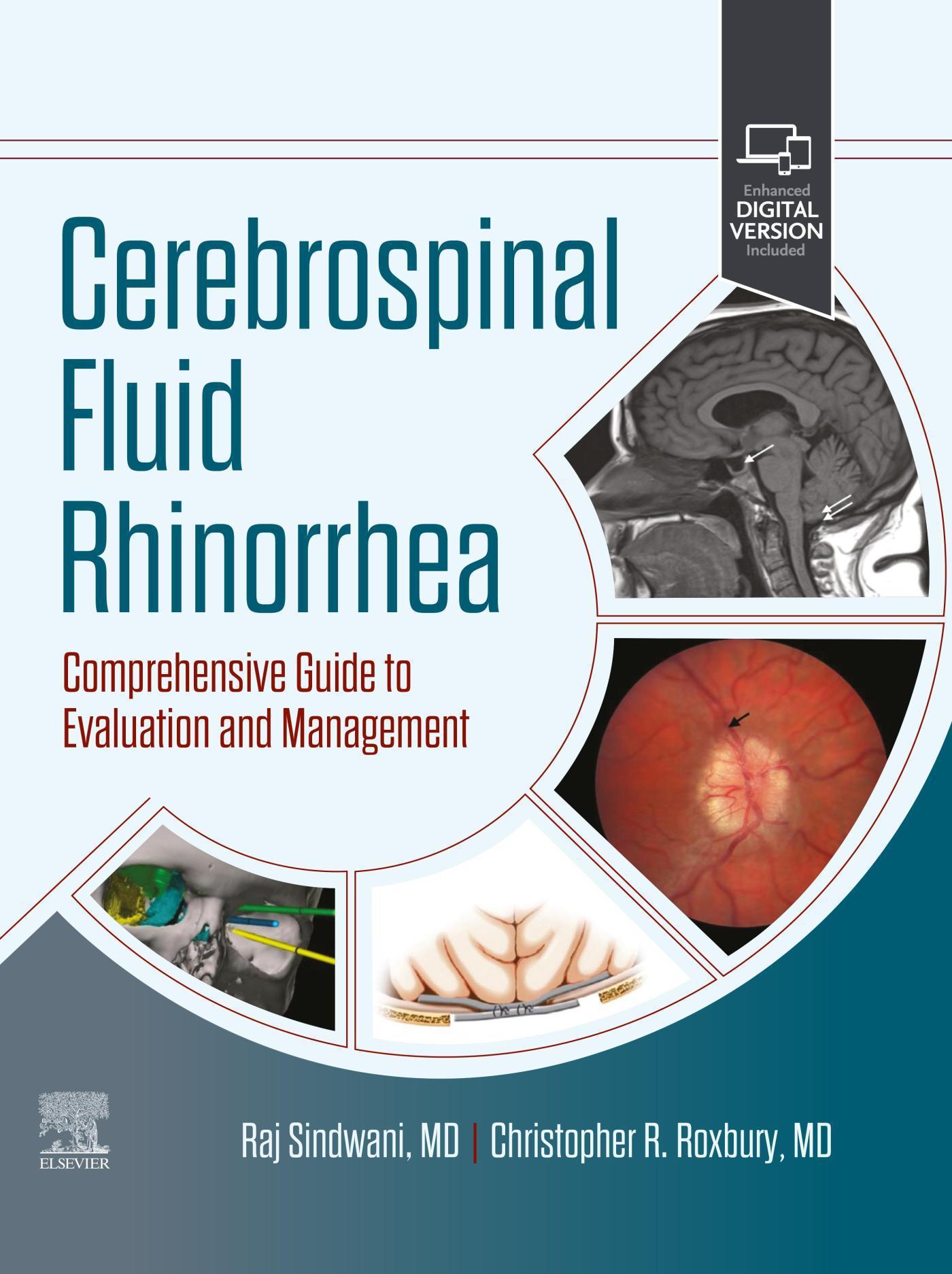
PART I Evaluation and Diagnosis of Cerebrospinal Fluid Rhinorrhea
01. Categorizing Cerebrospinal Fluid Leaks: A Framework for Understanding
02. Evaluation of the Patients with Cerebrospinal Fluid Leaks: History and Physical Examination
03. Confirmatory Testing for Cerebrospinal Fluid Rhinorrhea
04. Role of Imaging Studies in the Evaluation and Localization of Cerebrospinal Fluid Leaks
PART II Cerebrospinal Fluid Physiology and Anatomy of the Cranial Base
05. Cerebrospinal Fluid Physiology and Dynamics
06. Surgical Anatomy of the Anterior Cranial Fossa
07. Surgical Anatomy of the Middle Cranial Fossa
08. Surgical Anatomy of the Posterior Cranial Fossa
PART III Traumatic and Iatrogenic Cerebrospinal Fluid Leaks
09. Pathophysiology and Clinical Evaluation of Iatrogenic Cerebrospinal Fluid Rhinorrhea After Sinus Surgery
10. Pathophysiology and Clinical Evaluation of Blunt Force and Penetrating Trauma of the Anterior Cranial Base
11. Imaging of Anterior Skull Base Trauma
12. Surgical Management of Iatrogenic Cerebrospinal Fluid Rhinorrhea
13. Surgical Management of Large Traumatic Anterior Cranial Base Defects via Craniotomy
14. Postoperative Management of Traumatic Cranial Base Defects
PART IV Spontaneous Cerebrospinal Fluid Leaks and Idiopathic Intracranial Hypertension
15. Pathophysiology of Spontaneous Cerebrospinal Fluid Leaks and Their Relationship with Idiopathic Intracranial Hypertension
16. Diagnosis and Medical Management of Idiopathic Intracranial Hypertension
17. Surgical Management of Refractory Idiopathic Intracranial Hypertension
18. Ophthalmologic Evaluation of Idiopathic Intracranial Hypertension
19. Radiologic Findings in Idiopathic Intracranial Hypertension
20. Evaluation and Management of Congenital Skull Base Defects
21. Surgical Management of Spontaneous Cerebrospinal Fluid Leak of the Cribriform Plate
22. Surgical Management of Lateral Sphenoid Recess Meningoencephaloceles and Cerebrospinal Fluid Leaks
23. Surgical Management of Spontaneous Cerebrospinal Fluid Rhinorrhea Arising from Clival Defects
24. Postoperative Management After Cerebrospinal Fluid Leak Repair in Patients with Idiopathic Intracranial Hypertension
PART V Endoscopic Cerebrospinal Fluid Leak Repair and Skull Base Reconstruction and After Tumor Surgery
25. Clinical Evaluation of the Sellar Mass Patient
26. Clinical Evaluation of Patients with Skull Base Malignancies
27. Radiologic Evaluation of Skull Base Masses
28. Decision Making in Endoscopic Skull Base Reconstruction: A Graduated Approach
29.The Nasoseptal Flap: The Workhorse for Skull Base Reconstruction
30. Locoregional Pedicled Flap Options for Skull Base Reconstruction
31. Sellar Reconstruction After Pituitary Adenoma Resection
32. Reconstruction After Transtuberculum and Transplanum Approaches to Suprasellar Pathology
33. Endoscopic Reconstruction of Anterior Cranial Fossa Defects
34. Endoscopic Reconstruction of Middle Cranial Fossa Defects
35. Endoscopic Reconstruction of Posterior Cranial Fossa Defects
36. Transorbital and Transfrontal Approaches to Cerebrospinal Fluid Leak Repair
37. Free Flap Reconstruction of Skull Base Defects
38. Postoperative Management After Reconstruction Following Skull Base Tumor Surgery
PART VI Cerebrospinal Fluid Diversion and Advances in Instrumentation and Biomaterials
39. Role of Cerebrospinal Fluid Diversion in Cerebrospinal Fluid Leak Repairs and Skull Base Surgery
40. Advances in Endoscopic Visualization and Surgical Navigation
41. Powered Instrumentation and Bipolar Technology in Endoscopic Endonasal Skull Base Surgery
42. Evolution of Synthetic Graft Materials and Dural Sealants for Cerebrospinal Fluid Leak Repair
Index이 책의 특징
Offering up-to-date, multidisciplinary coverage of this nuanced and evolving field, Cerebrospinal Fluid Rhinorrhea provides a comprehensive overview of the evaluation and diagnosis, as well as the medical and surgical management options, for all causes of cerebrospinal fluid (CSF) rhinorrhea. It covers all aspects of CSF leaks, synthesizing current knowledge on pathophysiology, diagnosis, perioperative care, and operative techniques for this complex group of patients. Leading experts in otolaryngology and neurosurgery, as well as ophthalmology, neurology, and radiology, provide detailed coverage of the distinctions between management of patients with differing etiologies of CSF rhinorrhea, including spontaneous, traumatic/iatrogenic, and tumor-related.


